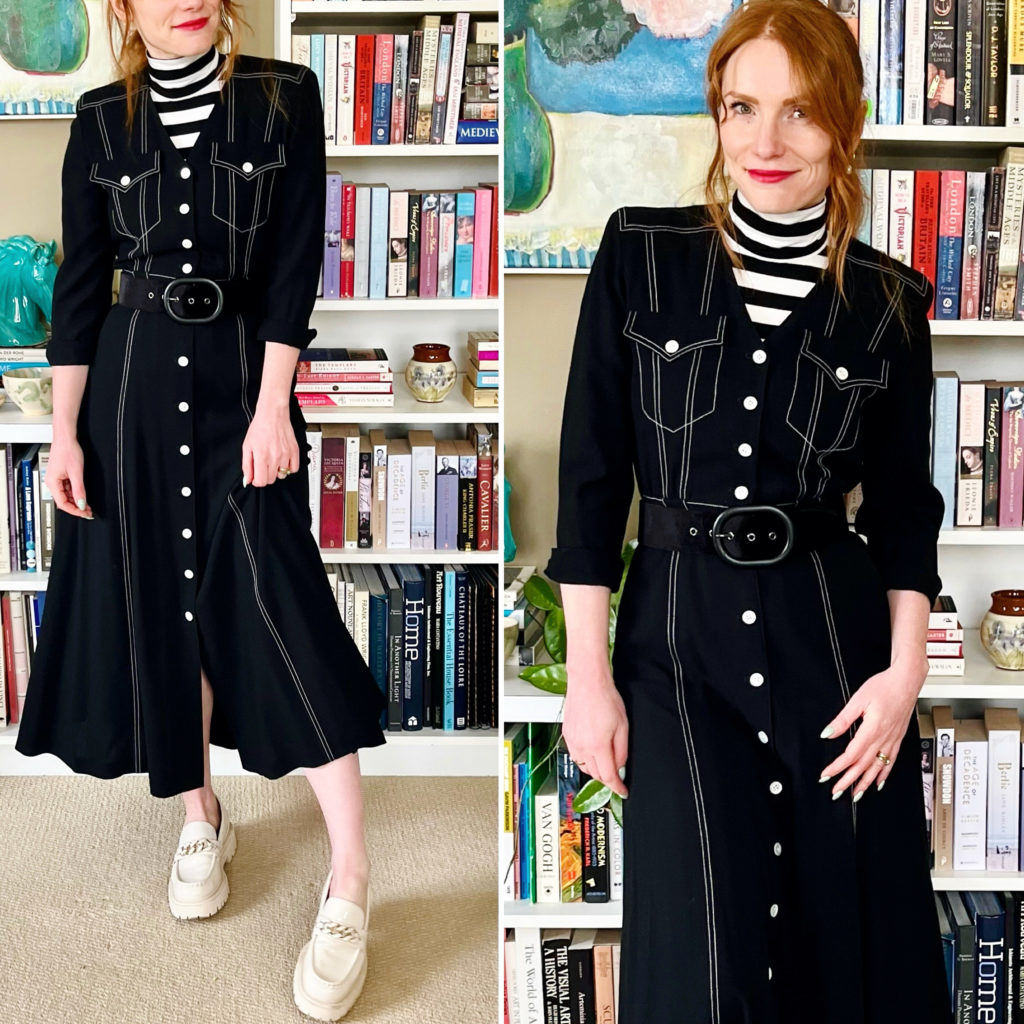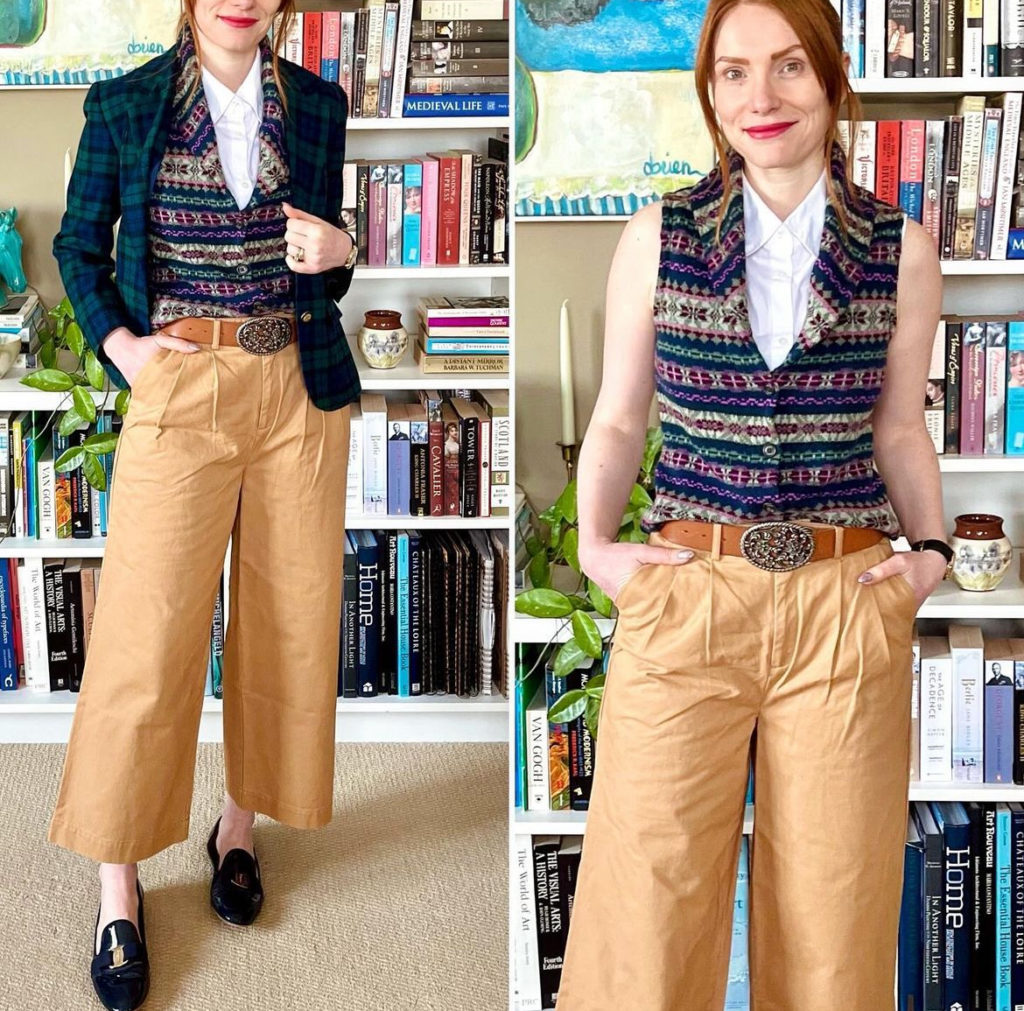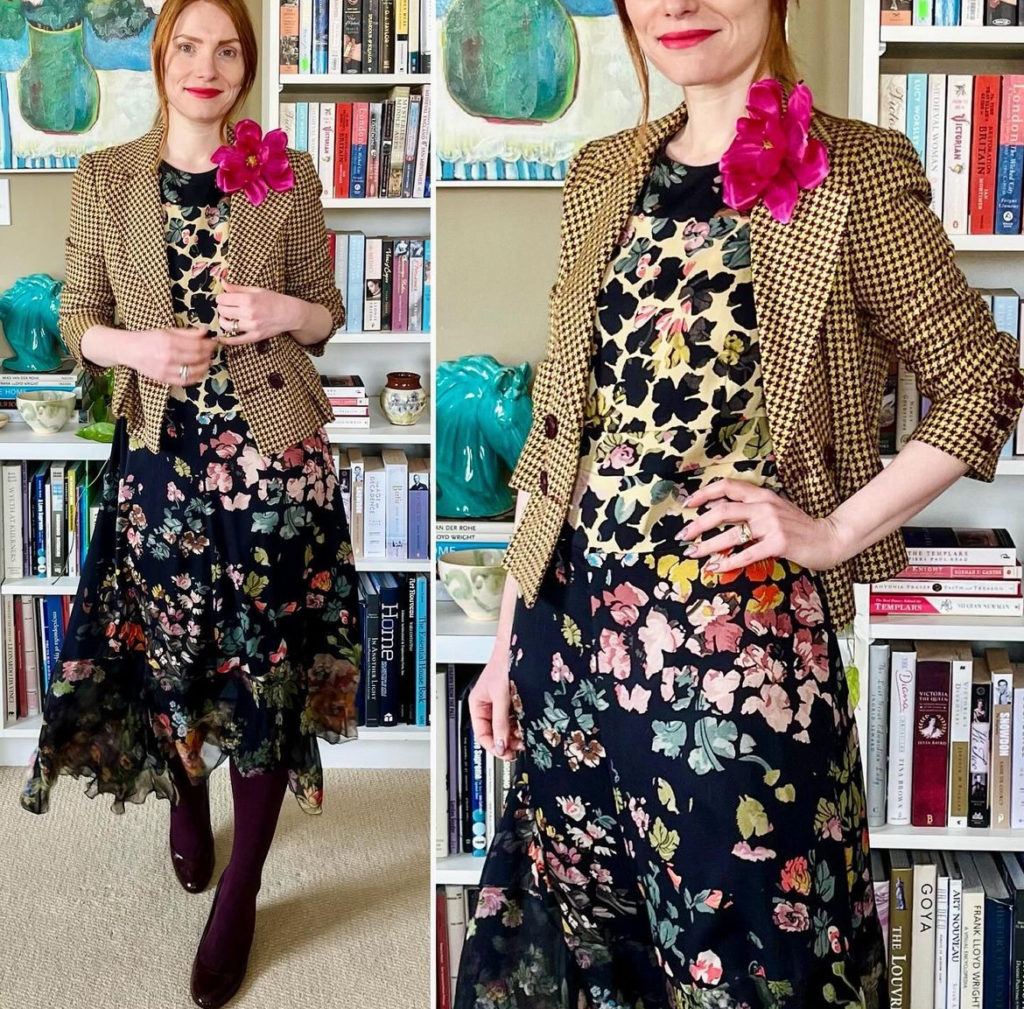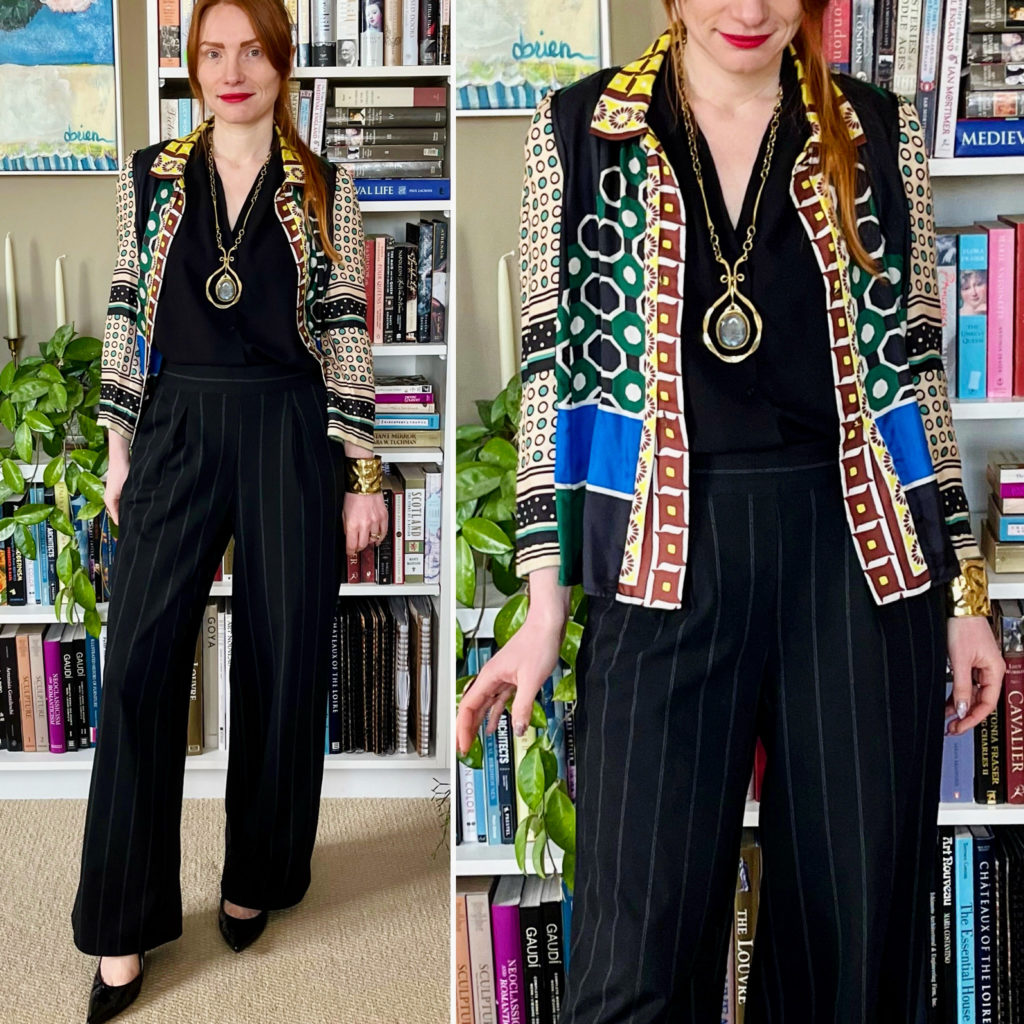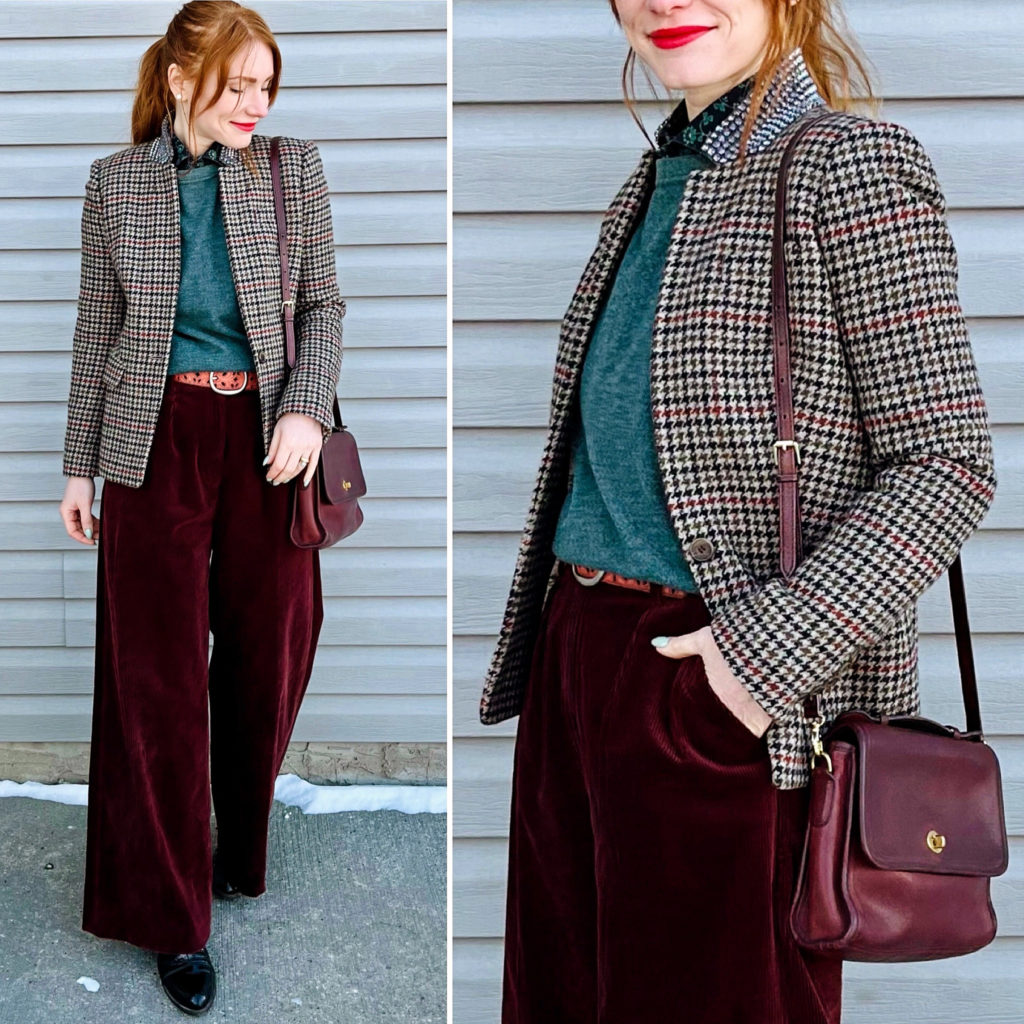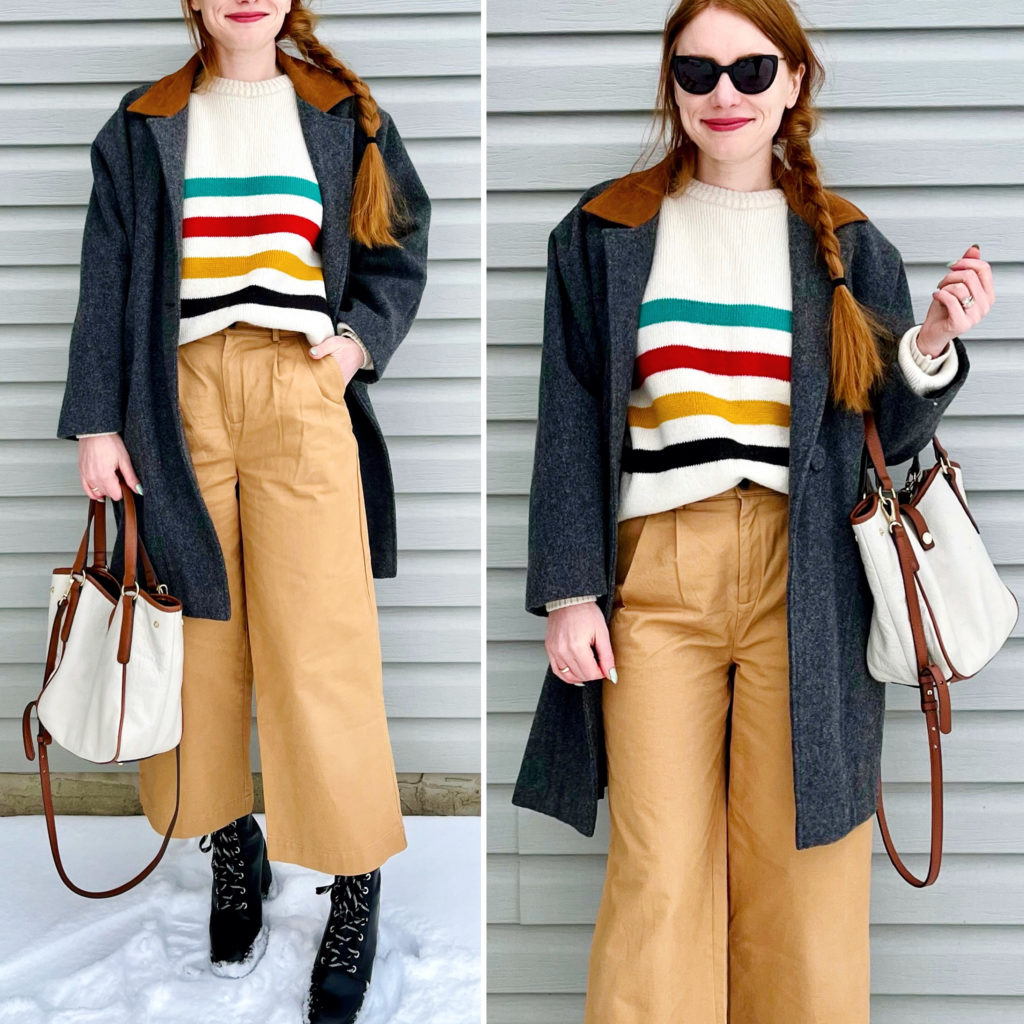Yes, we are doing a spicy take today! The title is inspired by a recent series on Amanda Lee McCarty’s podcast Clotheshorse, “Why Clothes Are Kind of Garbage Right Now”, and the content is inspired by my personal observations over the last couple of years, along with some pure speculation on my part. In truth, it’s nothing that should come as a surprise. I should have seen the writing on the wall as early as 2021, but I remained in denial for a while longer. Not anymore. These days, there’s very little sand left in which to bury one’s head.
I mentioned 2021 because that’s when I read Adam Minter’s Secondhand: Travels In the New Global Garage Sale. The book, which extensively documents various facets of the multi-billion global secondhand industry, makes the argument that thrift stores are facing a very real crisis thanks to a rising tide of unwanted secondhand – a crisis not of volume, but of quality. Simply put, thrift stores have no future if all they have to sell is crap. As I put it in my own (maybe, some day) book: it doesn’t matter how cheap it is; nobody wants to buy crap. Nobody here, and nobody elsewhere either; that includes countries in the Global South – historically, the final destination of surplus unwanted goods from the world’s affluent populations. Why settle for someone else’s crap when you can buy brand new for basically the same price? Even if the quality is no better, at least you get to choose exactly what you want.
Back in 2021, I scoffed at Minter’s warnings. Even a year into the pandemic, my local thrift stores were still full of great stuff. A couple of months before I’d read the book, I had found a Gucci blouse along with a bunch of other luxury designer pieces in one single trip. It was business as usual, or at least business as I had known it since the early 2010s. Practically every trip to the thrift store yielded dozens of designer items, along with a plethora of wonderful home wares, art, and so much more. I saw no signs of this abundance slowing down … not then. But that changed, and it changed more quickly than I thought possible. By 2022, the inflow of luxury goods had slowed to a trickle, and every year since, the overall quality of thrift merchandise has been in decline. At the same time, thrift prices continue their upward trajectory. Put a pin in that for now, we’ll come back to it later.
Thrifting has always been highly location-specific, so I am hesitant to make broad generalizations here. However, based on what I have seen on other thrifters’ social media, as well as on platforms like Reddit, I think my experiences here in Edmonton are not unique. The trends are universal, though, of course, their pace is different depending on geography. More and more of what’s being donated to thrift stores is of lower and lower quality. This is inevitable, as it reflects broader societal trends in consumption. There is a direct correlation between the garbage-ness of new clothes (which Amanda explained so eloquently on her podcast) and the garbage-ness of thrift stores. Garbage in, garbage out. As the quality of new clothes declines – which it has, consistently, since 2008 – the quality of what’s being donated is also declining. Superimposed on that are other factors. The pandemic ushered in an era of ever-increasing economic instability, which I am sure has impacted consumer habits. As wealth inequality continues to grow, the consumer base for luxury/designer clothing (and all high-quality goods in general) is shrinking. Luxury is still being produced, but it’s being sold to fewer and fewer people – resulting in smaller and smaller pockets of “good thrifting”. Middle class consumers who are still buying expensive goods are less likely to donate them; instead, they’ll probably use one of the ever-growing numbers of resale platforms to try to recoup some of their original costs. What ends up being donated is the crap that has no resale value because it barely has a sale value to begin with. Think $5 Shein sweaters. Lots of those floating around thrift stores these days. But who wants to buy a used $5 sweater for $4.99 (or, sometimes, more)?
The last bastion of value to be found in thrift stores these days are vintage clothes – basically anything made before 2008, when the majority of the fashion industry pivoted to a fast fashion model of quality-cutting to preserve profit margins. The thing about vintage clothes is that, by definition, they are of finite quantity. And the supply is ever-dwindling, while demand is ever-rising. I’m not the only one who’s caught on to the fact that vintage is the best value for money to be had these days. Even thrift stores are catching on – and starting to price accordingly. “Get it while you can” is my current motto. That, and “I hope there are no major size fluctuations in my future.” I am not being facetious. If I had to replace a significant portion of my current wardrobe, now or in the future … I couldn’t. Not without spending a lot more money AND compromising on quality. And that makes me very sad. Not just for myself but for everyone, especially my kids’ generation. My daughter and I currently fit more or less the same sizes, which means she has access to good clothes, but that may not be the case in the future. And then what? I don’t know.
Well, I do know. I know what needs to change in order for thrift stores to have a future – we need to start making, and buying, better quality new clothes. And better-quality stuff in general. Less of it, but better. It’s possible to do so at a price that doesn’t exclude the majority of consumers – again, this was the reality as recently as 20 years ago – but it would require the industry to make sacrifices. Specifically, to forego constant year-over-year growth and accept more modest profit margins. These days, that’s basically calling for revolution! It goes against capitalist dogma, and I understand why no single major industry player wants to take the risk of being first to stake out new ground. They are all afraid that, by rejecting the fast fashion (or ultra fast fashion, these days) model when nobody else is doing it, they will go out of business. And here’s another spicy take from me: I don’t think they’re entirely wrong to be afraid of that. In order for a company to successfully move away from the fast fashion model, consumers need to be on the same page. The problem is that all of us consumers have been conditioned, since 2008, to make purchasing decisions solely on the basis of price. That’s all that has mattered in the last 15 years: how cheap is it? Because the industry has been undercutting quality for the better part of 2 decades, there is an entire generation of consumers who simply doesn’t have a good benchmark against which to measure value (and quality) as opposed to price.
Imagine if Zara suddenly stopped putting out a new collection every week. Instead, a new collection would be released every season – spring, summer, fall, winter – comprised of pieces made of natural fabrics, with good construction and extended sizing (and, hopefully, made through more sustainable and ethical production methods). Fewer styles at slightly higher prices, with limited sales each season. Would that be a success? A widespread success? Sustainability-conscious consumers might applaud the effort and reward Zara with their dollars, but would the general public follow suit? Or would they look at, say, H&M and see similar-looking pieces – and many other pieces besides – for a cheaper price, and flock there?
Because it has been so long since society, collectively, has put any value on quality, a huge mindset shift is required before – or at the same time as – any change in the industry itself. Those two halves of the equation both need to be worked out … somehow. And this is the part I don’t know. I don’t know how we make the math work, and I don’t know if there is enough willingness (on all sides) to make it work. It remains to be seen.
But unless we work it out, thrift stores are going to continue to become garbage, a little bit more every year.
One last word, on thrift prices – because I promised earlier. I am as frustrated as anyone by what’s happening with thrift pricing; it does feel like old-fashioned gouging at times. But I’ve come to accept it as another symptom of this looming crisis of quality. It comes down to this: as a business, if you have less good merchandise to sell, the only way to make money is by jacking up the prices. And I can imagine thrift stores are feeling the pinch. Donation volume is likely at all-time highs, but smaller and smaller percentages of that volume represent sellable merchandise. Thrift stores have to dispose of the literal garbage and then try to make up their profit targets (accounting for inflation in operating costs, among other things) by selling less stuff for more money than before. Large chain thrift stores operate in a capitalist system too, don’t forget. Even if they’re not-for-profit enterprises, I’m sure their annual fundraising targets only go one way – UP. And thrifts are currently able to jack up prices because the general public hasn’t yet caught on to the diminishing returns issue. Thrifting still has a reputation as good-value-for-money – a way to find good quality goods for better prices than retail. It’s a reputation that was deserved, say, 5 years ago. Now, not so much. And people are starting to catch on. Stores are still busy, but I’m not seeing the same line-ups at tills as before. It’s all anecdata, of course, so take it with a fistful of salt. But I do think changes are a-coming. And I’m not sure they’ll make anybody happy.

